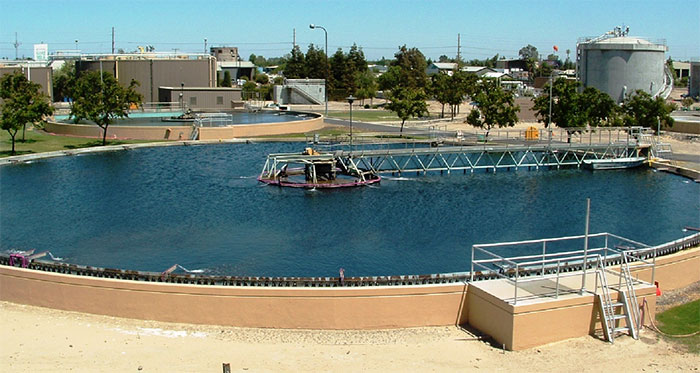Treat Water

As the City grows and develops, preserving a long-term supply of high quality water for our customers remains a top priority. The information provided here is a short summary of the City's water sources, uses and delivery method. For those seeking in depth information on the City's water quality and supply, a more detailed profile can be found in the City of Turlock's Annual Water Quality Report and Consumer Confidence Report.
Water Quality Annual Report
Drinking (Potable) Water
The water supplied to the City of Turlock's customers is comprised solely of groundwater from 150-600 feet below ground. Runoff from the Sierra, rain in the valley, and irrigation of agricultural and residential lands all contribute to maintaining the local groundwater supply. In order to ensure that tap water is safe to drink, the U.S. Environmental Protection Agency (USEPA) and the State Water Resources Control Board (State Board) prescribe regulations that limit the amount of certain contaminants in water provided by public water systems. The City of Turlock laboratory personnel are responsible for the daily analysis of potable and non-potable water samples. The laboratory performs more than 5,000 set of analysis each month. Certified by the California Department of Health Services, the lab performs all of the compliance and routine analysis of the City's well water supply system and new construction.Fluoridation
The City does not fluoridate the drinking water even though the natural level of fluoride in the water is very low. Based on California law, the City may be required to fluoridate in the future if funding from an outside source, such as the State budget, is available. It does not appear likely that these funds will be made available to the City of Turlock.Lead and Copper
Since 1993, the City has been required to sample tap water from some older homes every three years. This sampling requires the homeowners (all volunteers) to take a sample of their tap water first thing in the morning before any other use. These samples are collected and analyzed for lead and copper.Lead and Copper are rarely found in source water, but can enter tap water through corrosion of plumbing materials. Some older homes have lead and copper pipes, fixtures and solder. All water is corrosive to metal plumbing materials to some degree, resulting in the leaching of lead and copper into the water. Elevated levels of copper and lead can result in health problems.
Wastewater
Turlock Regional Water Quality Control Facility
The Turlock Regional Water Quality Control Facility (RWQCF) provides tertiary treatment of wastewater from the City of Turlock, Ceres and the community service districts of Keyes and Denair. Effluent from the facility discharges to the San Joaquin River. The San Joaquin River is designated an impaired water body under the authority of the Clean Water Act, Section 303(d). When a water body is listed as an impaired water body, the regulations require that no additional pollutants be discharged to the water body. Dilution credits will no longer be allowed for the effluent discharge from the RWQCF. The discharge requirements include tertiary treatment (coagulation/flocculation and filtration), lower levels of biochemical oxygen demand (BOD), total suspended solids (TSS), ammonia, and more efficient disinfection.Raw Wastewater Characteristics
The raw wastewater received at the RWQCF is a combination of domestic and industrial wastewater flows. The wastewater facility currently receives an average flow of 8.5 million gallons per day (mgd). Nearly half of the flow comes from food processing and dairy industries. The incoming wastewater is a high-strength waste, with biochemical oxygen demand (BOD) design concentrations averaging 544 milligrams per liter (mg/L), and total suspended solids (TSS) concentrations averaging 501 mg/L. The industrial wastewater loading to the RWQCF accounts for approximately 70% of the organic loading and 30% of the hydraulic loading.Treatment Process
The RWQCF is a tertiary treatment facility designed to treat 20 mgd. The facility currently treats an average of 8.5 mgd. The treatment process is comprised of the following unit processes: screening, primary treatment (flotation), secondary treatment (activated sludge) that includes biotowers, aeration and nitrification (waste solids are removed via a gravity belt thickener and anaerobic digestion), secondary clarification, high rate clarifier / thickener, cloth disk filters, and chlorine disinfection and sodium bisulfite dechlorination.POTW Staffing
The treatment facility is staffed 24 hours per day on a year round basis by eleven SWRCB certified operators. Nine mechanical and electrical staff perform required maintenance on the facility's equipment.US Environmental Protection Agency
State Water Resources Control Board


